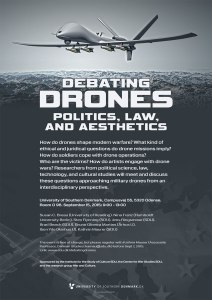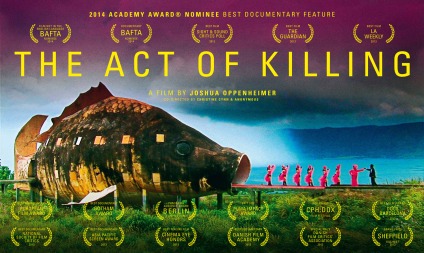Title of the Conference: Visualizing War: The Power of Emotions in Politics
Location: University of Southern Denmark, Odense, Denmark
Date of the Conference: 20.11.14 – 21.11.14
Organizers: Kathrin Maurer (Associate Professor of German Studies, University of Southern Denmark) and Anders Engberg-Pedersen (Associate Professor of Comparative Literature, University of Southern Denmark)
Topic: The role of images of war in shaping political debates
Images of War are omnipresent in our daily lives. Online newspapers, internet TV, and round o’clock news channels provide us with pictures of war victims, military interventions, and battle field. Even though, the sheer quantity of these images threatens to make us numb and oblivious, there are still some pictures that seem to stick with us. Think about the images of the dead children potentially poisoned gassed by Syria’s regime, the image of the burnt girl in Vietnam, or the atomic mushroom cloud of the Hiroshima/and Nagasaki bombing. These images seem to be inerasable of our collective consciousness and key for our understanding of these wars.
At the conference “Visualizing War: The Power of Emotions in Politics” we would like to investigate the following questions: Why do some images of war speak to us whereas others are quickly forgotten? How do images represent war in contrast to narrative and verbal media? And most importantly: How can images engender emotions, and how do these emotions impact the practices of government and policy making?
In order to find answers to these questions, the participants of the conference will analyze images of war from Antiquity to today. Not only in our times of virtual communication, bur also already Medieval Historical tapestry, historical atlases, war photography of the nineteenth- and twentieth century, as well as war films and literature, images have played a crucial role in representing war. In order to assess the emotional impact of images, the conference will enable a meeting point between the humanities and the social sciences. Participants from the humanities, who are particularly trained to investigate iconic “logic” of images, will engage into a dialogue with social scientist about the dynamics of policy making and government. This encounter should contribute to a closer understanding of war images as well as shed light onto the psychological dimension of governmental decisions and opinion building. Given the omnipresence of visual representations of war in our global age, the investigation of the “emotional” power of these images in national and global politics seems to be of great urgency.
The Aims of the Conference:
The conference aims to achieve three goals:
- to develop innovative scholarly approaches and knowledge about the relationship between images of war and government
- to establish an international network on visuality, war, and politics
- to internationalize Danish research
The conference would provide an international forum, where scholars from the global academic community are able to exchange current research trends on the representation of war, visual theory, and visual culture. The works on images by W. J. T Mitchell represent one important theoretical focus of the conference. However, his theories on visuality, emotion, and politics should be connected with debates on political deliberation, policy making, political decisions, and governance. This interdiscursivity of cultural studies and political science embodies the goal of this conference. In order to find out how images of war work, how they impact the viewer, and how the visual eventually is translated into verbal expressions in terms of policy deliberations, a vital dialogue between the social sciences and the field of the humanities is imperative. In other words, it is the goal of this conference to analyze the representations of war in a truly interdisciplinary matter and, thus, create a vital exchange between scholars of literature, visual studies, political theory, philosophy, and international politics.
Background and Contents of the conference:
The so-called visual turn, which began with semiotic theory in the 1990s, implemented a decisive change of perspective on the power of images in literary studies, media studies, and the social sciences. According to W. J. T. Mitchell, whose work has been groundbreaking for the “visual turn”, images no longer embody media that illustrate knowledge and function like a supplement to verbal representation.[1] Rather images have their own hermeneutic power by which they can construct meaning. Mitchell emphasizes that images have a different “language” in comparison to the verbal, and thus can compel the viewer by their intensity, intimacy, and affect.
How does this “affective language” of iconic representations of war impact the ways in which governments steer and control political debates? On the one hand, images have strong effects in rallying people to protest and/or to push forward governmental action. Think of impact of the images of the burning Twin Towers in 2001, or the photos of the prison at Abu Ghraib, or the most recent images of Syria’s potential use of poison gas. But on the other hand, images of war can also do more than that. Since they can engender emotions, they can function as a source of new methodological strategies in political scholarly analysis. Since emotions earlier were often seen as ephemeral phenomena, and thus not accountable to social scientific methods, they were frequently underexposed in scholarly analysis. This has decisively changed in recent debates, and e. g. Robert Bleiker (Professor of International Relations, The University of Queensland, Australia) and Martha Nussbaum (Professor of Law and Philosophy, University of Chicago) have taken the question of visual representation and emotions directly into the discourses on politics. Although Bleiker’s field of expertise is international politics and Nussbaum’s political theory, they both share the insight that emotions play a crucial role in shaping collective identity, which in turn impacts practices of policy deliberation and governance. They both draw attention to the field of visual and literary studies in order to learn about tools on how for integrating, assessing, and utilizing the “power of emotions” for political analysis.
In Denmark, scholars of political science debate the relation between on visualization and government as well. Most prominent is the work of Lene Hansen (Keynote Speaker), Professor of Political Science at Copenhagen University, and her work on visual securitization. Her research focuses on the role of the image in relation to security practices, identity, and governmental control.[2] Professor Sten Rynning (Keynote Speaker), Professor of International Relations and Leader of the Center of War Studies at the University of Southern Denmark, has an expertise in International Relations and strategic concepts of the NATO. His specialization in global war strategy would provide the opportunity to contextualize the representation of war strategy in cultural and literary discourses such as historical novels, war games, and war films.
The conference “Visualizing War” will provide a trajectory to connect political debates about images with discussions about images in the humanities. Like in political science, also the humanities have focused on visuality. With respect to representations of war, the works by Judith Butler, Professor for Rhetoric and Comparative Literature at the University of California, Berkeley, on affect and war have been essential. Butler’s work on war analyses how the government can “frame” the perception of violence and war, and, thus, how these “frames” can control ethical and emotional reactions to warfare. She analyzes in particular war photography as a medium that not only describes war events, but also can prescribe its reality, development, and ethical judgment.[3] The work by Jan Mieszkowski (Keynote Speaker), Professor of German Studies and Humanities Reed College, will demonstrate this connection between visual culture and governmental practices. Drawing on his book Watching War,[4] he will present the close connection between making war and watching war and discuss notion of military spectatorship in modern society.
In particular in the field of literary studies, this connection between the visual, affects, and governance has been vital. Christine Kanz (Keynote Speaker), Professor of German at the University of Ghent, works on questions regarding how literary texts can convey experiences of war in an immediate and authentic fashion by working with poetic strategies of visual representation (performativity, “pictorial” language, metaphors). Her work analyses the representation of male birth fantasies in German historical novels of the early twentieth-century, and connects these fantasies to war trauma and governmental control.[5] Scholars of trauma studies have researched the aspect of the visual in reference to the representation of war. Stephan Jaeger (Keynote Speaker), Professor of German Studies at the University of Manitoba, works on performativity in representing war in German war museums, contemporary historical fiction, and historiography. In particular, his work on war museums is of great importance for the conference, since museums as governmental institutions not only often stage war visually, but also can define an agenda on how to commemorate and how to feel about war.[6]
Against this backdrop of the theme “visualizing war,” the conference aims to discuss images of war in a truly interdisciplinary fashion connecting the discussions in political theory and international politics with the ones in the humanities (literature, art history, media studies). Since the focus of the conference is primarily informed by theoretical debates, there is neither a national nor a historical timeframe for our analysis of representations of war in public media, literature, and visual arts. However, due to the specialization of the keynote speakers, there will be a focus on American, German, and Danish debates on war.
Topics of discussion on the conference:
– “language” of war images and how do they affect the viewer
– relationship between images of war, emotions, and governance
– image and security
– media of war images (literature, film, photography)
– emotions and governance
– representation of war and gender
– theories of emotions
– discussion of justice
List of keynote Speakers:
1. Jan Mieszkowski, Professor of German Studies and Humanities Reed College
2. Lene Hansen, Professor of Political Science at Copenhagen University
3. Sten Rynning, Professor of International Relations and Leader of the Center of War Studies at the University of Southern Denmark
4. Christine Kanz, Professor of German at the University of Ghent
5. Stephan Jaeger, Professor of German Studies at the University of Manitoba
[1] W. J. T. Mitchell, What Do Pictures Want? Essays on the Lives and Loves of Images (2005);
Cloning Terror: The War of Images: 9/11 to the Present (2011)
[3] Judith Butler, Frames of War: When is Life Grievable? (2009)
[4] Jan Mieszkowski, Watching War (Stanford: Stanford UP, 2012)
[5] Christine Kanz, Maternale Moderne: Männliche Gebärphantasien zwischen Kultur und Wissenschaft (Maternal Modernity: Male Birthfantasies between Culture and Science) (2009)
[6] Stephan Jæger, Fighting Words and Images: Representing War across the Discipline (2012); Zeichen des Krieges in Literatur, Film und den Medien. Eds. Stephan Jaeger & Christer Petersen (2006)


